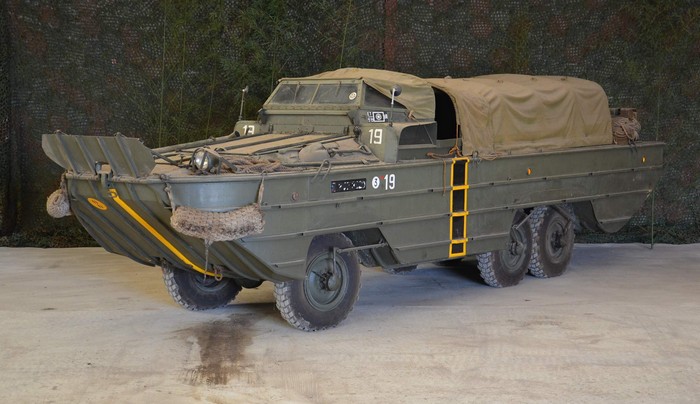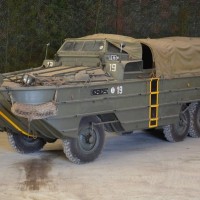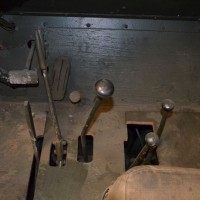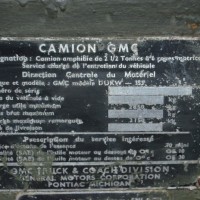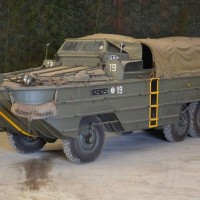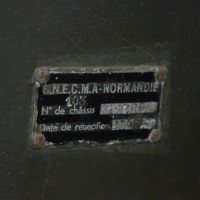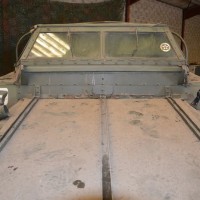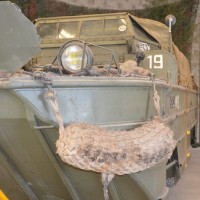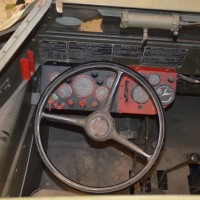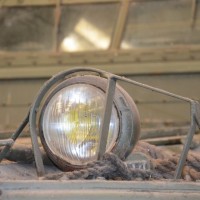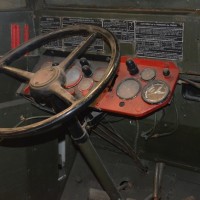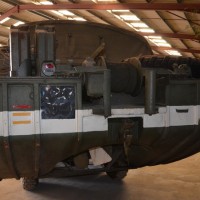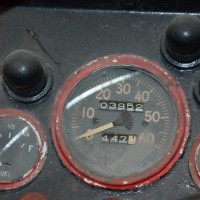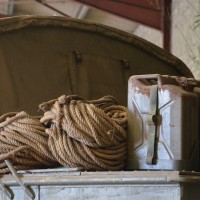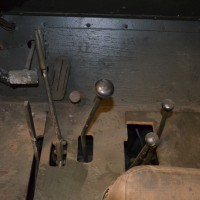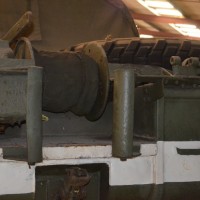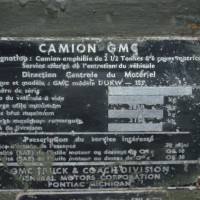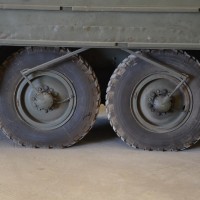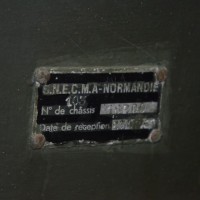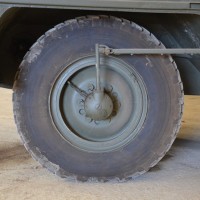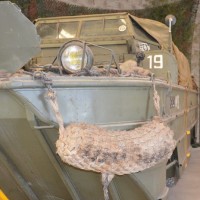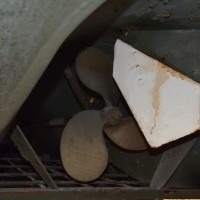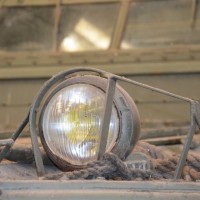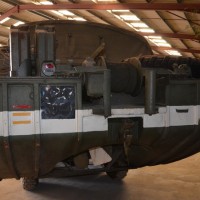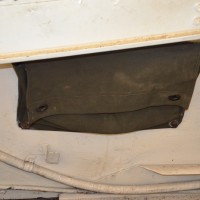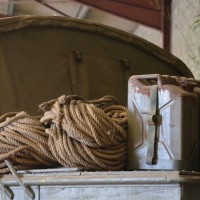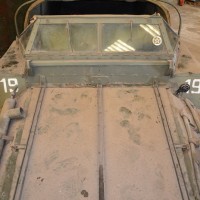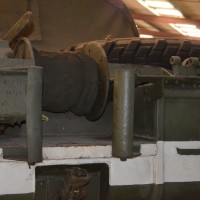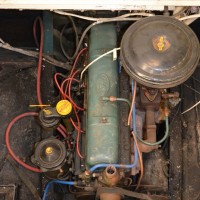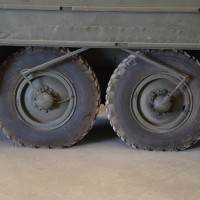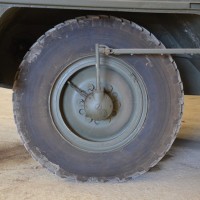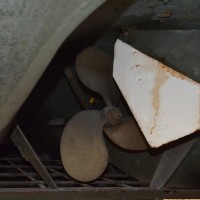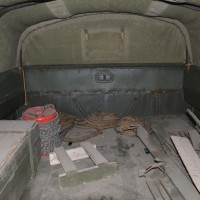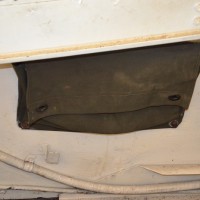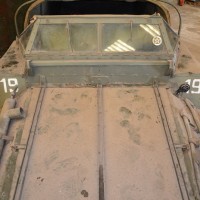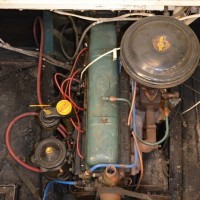SCM Analysis
Detailing
| Vehicle: | 1945 GMC DUKW 2.5-Ton Amphibian |
| Years Produced: | 1943-45 |
| Number Produced: | 21,147 |
| SCM Valuation: | $25,500-$50,000 |
| Chassis Number Location: | Data plate on the dashboard, plus over the front axle on the left frame rail |
| Engine Number Location: | Pad on the driver's side of the top of engine block, just below the cylinder head |
| Club Info: | Military Vehicle Preservation Association |
| Website: | http://www.mvpa.org |
This truck, Lot 274, sold for $28,611, including buyer’s premium, at Artcurial’s “Automobiles Sur Les Champs V” auction in Paris on June 10, 2013.
World War II had been raging for 10 months when, in June 1940, the U.S. government formed the National Defense Research Committee — a full 18 months prior to the United States entering the war. The NDRC, a clean-slate, fresh-idea think tank outside of the normal military and corporate channels, was told to find new tools and methods for the U.S. military.
An amphibious jeep was first on the list. With P.C. Putnam leading the team, a hull designed by Roderick Stephens Jr., and a driveline by Ford, the end result was the Ford GPA, or “Seep.” Rather slow, easily swamped, and not having much range or cargo capacity, it wasn’t nearly as successful as the now-famous Jeep.
The NDRC morphed into the Office of Scientific Research and Development in June of 1941. In April 1942, Putnam was asked to develop an amphibious truck. He chose the already-in-production GMC CCKW as a starting point, and once again had Roderick Stephens design the hull and a team of engineers from Pontiac build the prototype, which was successfully tested in June of 1942. An initial order for 2,000 was placed and production commenced.
Minor teething problems were overcome, but the biggest problem was training enough crew to operate the craft, as driving in water proved much more difficult than expected.
All DUKWs were powered with the 270-ci GMC 6-cylinder engine that also powered the CCKW. All DUKWs were built to a common specification, although the early hull shape differed somewhat from later production.
A floating, fighting truck
The DUKW was the first vehicle to allow the operator to vary the tire pressure from the driver’s compartment. On the DUKW, this was to allow for increased flotation with less tire pressure on beach sand and for more pressure on improved roads or coral. This was also why DUKWs have single rear wheels instead of the dual rears on CCKWs.
While the DUKW was not designed to be an amphibious assault vehicle, mostly because of the 1/8-inch-thick, soft-skin hull, it did serve in that role when it was discovered that unguided 4.5-inch artillery rockets and 105 mm howitzers could be fired when being transported facing forward. However, it was an outstanding success in its primary role: the ship-to-shore-and-beyond shuttling of personnel and war materiel, including river crossings and general transport in backwater areas.
First used in the Pacific theater in March 1943 at Noumea, New Caledonia, the DUKW also proved especially effective in the European theater, beginning with the invasion of Sicily in October of 1943, on the D-Day beaches of Normandy, the invasion of southern France, and in the Dutch lowlands that the retreating Germans flooded. Various other allies also used them, including 586 sent to the Russians under Lend-Lease. The British and French continued to use them into the 1960s, while the U.S. used them in Korea and up to Vietnam.
After World War II, some were decommissioned and distributed to civilian search-and-rescue units and law enforcement. However, in civilian hands, they became most famous as tourist craft. Most notable are the ones used for touring the lakes of the Wisconsin Dells area. The first “duck tour” company was formed in 1946 by Mel Flath and Bob Unger, whose company is still in business today as “The Original Wisconsin Ducks.” Other DUKWs are the star vehicles of amphibious tour companies worldwide — especially in cities with significant coast or shoreline. Continued service with civilian and military users through today has greatly enhanced parts availability.
Why was this a European Duck?
This example is equipped as a typical late-production version, with slanted windshield. It is also shod with a set of tires with NATO-spec tread, which to an enthusiast comes off a bit distracting. Experts expect to see a set of World War II-era non-directional tread tires fitted.
This Duck was one of seven U.S. military vehicles consigned and offered at no reserve from a French collection. It doesn’t seem out of place for one of these to be offered at a high-end auction in Paris.
Yanks have been embracing more of our history from World War II in the past decade, but so too have a great number of the folks we liberated. The Italians, Belgians, and French have been very active in re-enacting famous World War II battles, and they’ve been very authentic in their portrayals of the liberating Americans and their equipment. In fact, the U.S.-based Military Vehicle Collectors Association has opened up a liaison office in Florence, Italy.
It’s actually easier and cheaper to buy and restore an American World War II vehicle in Europe than in the U.S. Simply put, liberating Europe from Nazi Germany (and Asia from Imperial Japan) was why we were building them. Europe was where we shipped and used most of them for much of World War II.
After the war, there was a gentlemen’s agreement with the War Department and the U.S. auto industry that the vehicles that could compete with the civilian market were not to return to the U.S. Also, they were not worth the shipping costs to bring them back to the states.
So, many of these military vehicles re-armed our allies and provided transport to a continent in need of work trucks to help rebuild.
The DUKW was something of an unusual duck, as it was unique enough to warrant redeploying globally — and keeping it in active service longer than the CCKW trucks it was based on. Those CCKWs it shared most running parts with were relatively plentiful as surplus in Europe — along with their spare parts. In a way, one can argue that we helped set up the vintage military vehicle parts supply network over there at the end of the war, and the Europeans are still benefiting from it.
A good buy for a weird vehicle
The selling price seems very reasonable. However, as seen below, it hardly can be much of runner if that Jimmy 270 is without an upper radiator hose. Even if it only needs the usual mechanical waking up like most museum vehicles (such as hoses and brakes), it still would be a good buy if it were in the U.S. However, the Europeans — who use DUKWs to a greater extent than we do — would call this sale market-correct.
These are not vehicles that are a slam-dunk to easily restore, such as a Jeep or a CCKW. The DUKW has complex systems, such as the tire-inflation unit and propeller drive. In addition, there is always the need to keep it all sealed and seaworthy. And, as this truck is also a watercraft, there are always corrosion issues to deal with — either preventing or repairing. Tackling one as a restoration project is not for the weak of talent or light of wallet. More so than even most vintage military vehicles or cars, you are money ahead to get a good functional original. If this is in fact a complete runner, it’s well bought. ?
(Introductory description courtesy of Artcurial Motorcars.)
